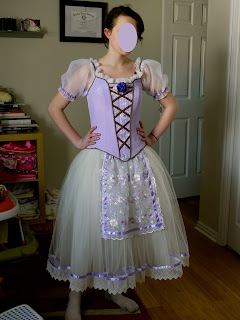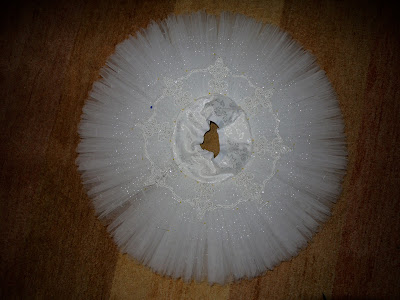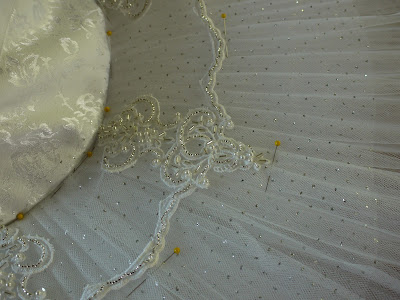Reviewing the Pattern
In costuming, I am used to not working with pattern instructions. Oftentimes, patterns are drafted in house, cut into fabric and handed over to the stitcher, sometimes with a design sketch and brief verbal instructions. This pattern has instructions but they are written very simply and with the assumption you know what you are doing or built something similar in the past. I briefly skimmed through before I began. I noticed that 1/2" seam allowances are included. Hem allowances are 1" with 1/2 seam allowance making for total of 1 1/2" turned up. The pattern designer, included a pattern pieces diagram with a cutting guideline. He doesn't include yardage amounts nor fabric recommendations. Having made doublets in the past I estimated approximately 2 yards per jacket. My fabric was 60-62" wide which in the end was an over estimate of 1/2 yard per. Usually, I like to buy 10% more than is needed for future repairs or alterations, slightly more if the fabric has nap or one way pattern direction. The pattern designer lists two different flat-linings; coutil (for the body, epaulets and collar) and washed muslin (for the sleeves) and one interfacing of fusible hair canvas.
Fabric Choices
For my project, stretch velvet was chosen. The director wanted it to fit generically so it could be used for years to come. I was hesitant to use a stretch fabric when the look and design is for a woven. Often with men's ballet tunics, woven fabric tops can be made in two pieces, an over vest and a stretch under shirt with sleeves attached. This enables the dancer to have full movement of arms. I have seen some built without using the undershirt method and instead stretch panels are used in the sides or wherever needed, etc... This pattern doesn't use the undershirt nor does it mention using stretch fabrics. This is where experience and knowledge of a show's choreography is necessary so changes to the pattern can be made. I chose to go completely with stretch fabrics for the jackets. My flat-lining fabrics were 4 way stretch cotton lycra for the body, shiny milliskin for the sleeves (gives just a little bit of slickness) and rayon bemberg for the collar and tails. Interfacings (from Fashion Sewing Supply) used were shirt crisp for the collar and tricot deluxe for the body front and tail sections. (I am not affiliated nor was I compensated with Fashion Sewing Supply, just really love her products).
Pictured here is a side back. The interfacing is in white and applied to the tail portion. This is where I deviated from the pattern instructions which has you apply fusible hair canvas to the tail lining. The fabric being pinned on top is the flat lining.
Side back ready for flat lining as stated in pattern.
 |
| I made the side seams with 1" seam allowances as well as the center back. |
The jacket is completely flat lined except the tails. This is the way I would have created the pattern. One thing that bothered me about the original patterns is that the lining stops short of the side seam allowances. (see picture). This would look unfinished if the sides were ever let out. Most likely they probably won't be, (most dancers have similar sized bodies) but you never know. I think the pattern designer did this to eliminate bulk which in theory it is a good idea. Also, the front and back are constructed separately, sleeves put in flat and then the sleeve seam and side seams are sewn in one. I don't like this so much. I like to have the sleeves separate and and the jacket finished up to the sleeve insertion for a first fabric fitting. This way I can make adjustments to the shoulder line and arm scye if needed. I have to make a note here, I made the jackets up completely with no fittings nor measurements of dancers ... got to love regional/community theatre).
Finished linings in the tail.
 |
| Almost done! |
I only have a female dress form so the jacket looks a little odd. As I was pinning the trim on, I made the decision to hand tack the trim. Velvet can be quite finicky and I didn't it want it to stretch the fabric out. I think a walking foot on a machine would have been nice. One day I will buy one...
Even with hand tacking, I got some weird pulling but on stage it was not noticeable. I also got some bagging out on the sleeve, probably due to the flat lining (milliskin) fighting the velvet. These are some of the reasons I wished I used a woven fabric instead.
Overall, I really liked this pattern. I could tell it was made by a costumer who knows what they are doing. Personally, I would have been fine without seam allowances included. I look forward to trying out more of his work.
The Nutcracker
The Prince













